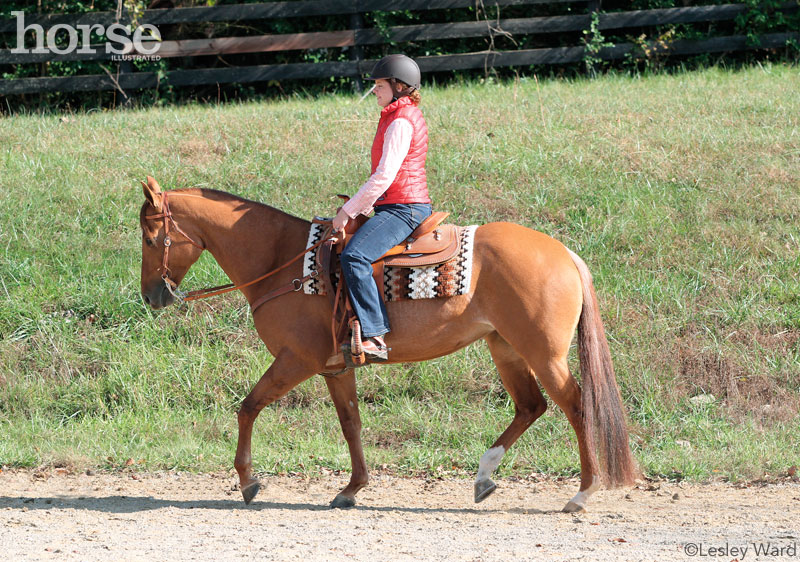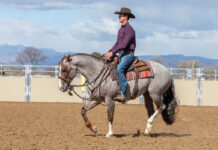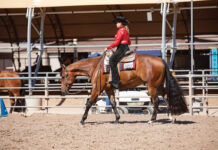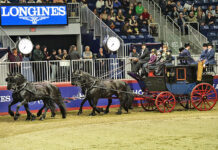
Part of the allure of riding western is sitting astride a slow-legged horse as it moseys
along at a jog. Faster than a walk, slower and more relaxed than a lope, the jog is the
gait most favored for covering ground on trail rides. In the show pen, novice riders
typically master the walk/jog division before moving up the ranks. But what if you’re
having trouble getting in the groove when it comes to sitting still at the jog? If you
struggle to sit the jog without bouncing, here are some suggestions.
- Check the length of your stirrups. If they’re too long you’ll either roll too
far back on your tail bone or too far forward on your pelvis in an effort to keep your
boot in the stirrup. That’ll undermine your position in the saddle and make you more
likely to bounce. Stirrups that are too short will create too severe of a bend in your
knee, forcing you to perch above the saddle. That will also make your seat insecure. - Once your stirrups are adjusted properly, think of sitting “in” the saddle
rather than “on” the saddle. With that same mindset, relax your lower back so the
muscles of your lower back and core midsection can follow the natural movement of the
horse. - To help get the feel of following the motion of your horse, take your feet out
of the stirrups and stretch your legs down and around the barrel (rib cage) of your
horse. Much like riding bareback (another way to develop a more natural seat), riding
without stirrups will force you to connect with your horse’s back and follow the motion
of each stride. - Though you want to maintain an erect upper body with good posture, strive to do
that without holding yourself in place by gripping with your thigh and knee. Such bad
habits will cause your seat to pop up and out of the saddle with each stride at the jog. - How schooled is your horse? A horse that’s high-headed with a hollow (inverted)
back is typically rough to sit. Manipulating the headset with draw reins or a tie-down
and restricting the trot to a slower speed rarely results in a smooth jog. Instead it
requires consistent schooling to help the horse collect its stride, slow its pace and
develop self-carriage. Such qualities help create a jog that’s much smoother to sit.






good article and true; i’m 55 and i try to ride my best everytime; my aqha mare after months of practice is slow and easy at the trot, but even then i find myself attempting to correct my seat; in fact, i rode bareback recently and my horse never moved better; hum, what changes when i’m in the saddle – more tips appreciated.
Good tips. It also helps not to have a bouncy horse.
agree! one of my horses is bouncy